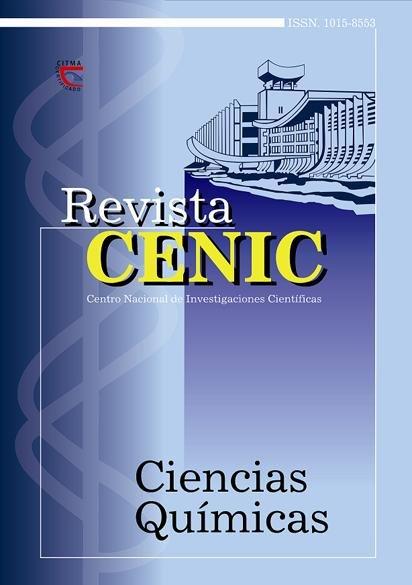Electrochemical methods as control test for casting dental alloy individual prosthesisMétodos electroquímicos como prueba de control para prótesis individual de fundición de aleación dental
Abstract
Extensions and modifications of standard electrochemical techniques,
accounting for unique conditions related to biological considerations, have
proved useful in attacking some problems related to biocompatibility of the Biomaterial.
Some authors have demonstrated that modern electrochemical techniques
can be used to clarify some difficult problems in the field of biomaterials.
Precious alloys can not be apply for all cases especially such as long range bridges
or prosthesis. For this reason, Ni-Cr as well as Co-Cr casting alloys have been
used for dental application as alternatives to precious alloys. The biocompatibility
of Ni-Cr alloys have been questioned because of their corrosive, allergenic,
and even mutagenic potentials. The
nature of passive films on metals and
alloys is the ultimate factor which controls
their corrosion behavior. There is
little reliable information on the effects
of the physical and chemical factors
involved in the tissue response to an
implant and the associated ionic release
on the cell-material interaction. Depending
on the casting process during
the production of a dental prosthesis,
these alloys may show different phases,
ones may be more stable than other. For
this reason, the development of a fast
and simple method for determination
of the corrosion behavior as a control
test in the production of a metallic dental
devices is of great interest. The purpose
of this work was to present some
results on the corrosion behavior of two
different commercial alloys: Wiron 99
(Ni-Cr alloy) and Aurolloyd kf (Au alloy).
These results were obtained by several
electrochemical methods: open circuit
potential-time and liner sweep
voltammetry for Wiron 99, and open
circuit potential-time and cyclic
voltammetry for Aurolloyd kf.

Downloads
Published
How to Cite
Issue
Section
License
Copyright (c) 2004 Copyright (c) 2004 Revista CENIC Ciencias Químicas

This work is licensed under a Creative Commons Attribution-NonCommercial-ShareAlike 4.0 International License.
Los autores que publican en esta revista están de acuerdo con los siguientes términos:
Los autores conservan los derechos de autor y garantizan a la revista el derecho de ser la primera publicación del trabajo al igual que licenciado bajo una Creative Commons Atribución-NoComercial-CompartirIgual 4.0 que permite a otros compartir el trabajo con un reconocimiento de la autoría del trabajo y la publicación inicial en esta revista.
Los autores pueden establecer por separado acuerdos adicionales para la distribución no exclusiva de la versión de la obra publicada en la revista (por ejemplo, situarlo en un repositorio institucional o publicarlo en un libro), con un reconocimiento de su publicación inicial en esta revista.
Se permite y se anima a los autores a difundir sus trabajos electrónicamente (por ejemplo, en repositorios institucionales o en su propio sitio web) antes y durante el proceso de envío, ya que puede dar lugar a intercambios productivos, así como a una citación más temprana y mayor de los trabajos publicados (Véase The Effect of Open Access) (en inglés).













